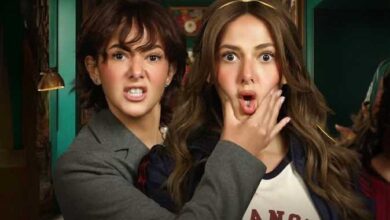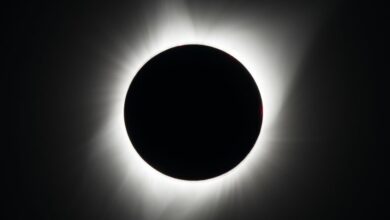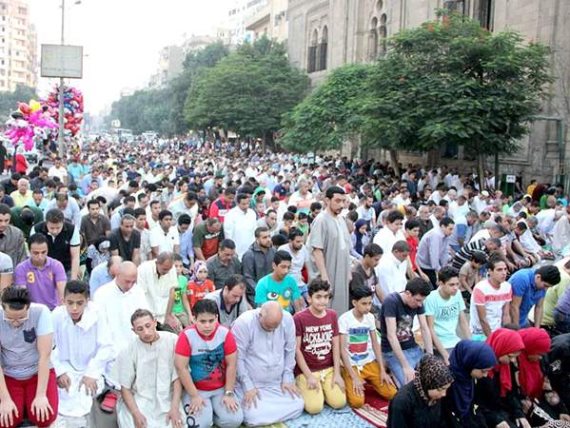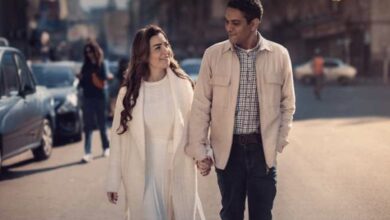Until quite recently, Egyptians had a distinctive body language associated with Ramadan. It wasn’t just a month of worship and religious obligations, but was also—at least for us as children—a world of color, lights, and joy. In the midst of all this color and light, the body played a celebratory role: the dances of children with their lanterns, which cast patches of colored light on walls and pavements; the kneeling and prostration of worshipers at tarawih prayers; the bread boy on his bike elegantly weaving a path through pedestrians, one hand (or even no hands) on the handlebars and the other helping to balance the enormous crate on his head overflowing with bread for iftar or suhour.
For us children, the most astonishing sight was the body of the kunafa maker. When Ramadan came, the kunafa maker was transformed into the tallest, nimblest, and most graceful of men.
With great pleasure and wonder we would observe him as his elongated form swayed in a circular motion, mimicking the movement of his funnel-like cup over the huge round tray. We would watch his hand as it grasped the kunafa cup by the rim, like a painter holding his brush, to draw those lovely, thin, white lines of pastry. It was just as much fun to watch him in action as it was to taste the sweetness of the kunafa after iftar. But one cannot describe the dance of the kunafa before setting the scene.
Setting the stage
The kunafa maker would start setting up a special oven at the entrance to his shop about a week before Ramadan. Shaped like a cylinder, it was raised about 130 cm off the ground, with an opening to light the gas burner (before that, kerosene or wood was used to stoke the fire). A round tray with a diameter of about 110 cm, known as the “ironstone,” was set on top of the oven at a slight tilt.
Next to the oven, the kunafa maker stood wielding his kuz, a brass cup-like implement with a row of nine small holes on the bottom. There was also a large pot for the flour-and-water batter, a sieve for the batter, and a ladle—actually a large spoon used to transport the liquid batter from the pot to the kuz.
Each part of the set was assigned a specific place on the stage that was perfectly suited to the needs of the kunafa maker’s physical performance. To his right was a small platform, on top of which sat the pot of batter with the ladle inside; to his left was a table covered with a clean white cloth on which the cooked kunafa would be placed, right next to the scale for weighing the customer’s purchase.
We the audience
We young boys would beg our mothers to let us go buy the kunafa, both so we could enjoy the show and to breathe in the magnificent scent of the fresh pastry. We weren’t allowed to go until we had memorized the usual sentence: “My mom says please give me one and a half kilos of kunafa, but make it fresh and not too doughy.” Mothers would put the money for the kunafa—never more than 2 or 3 piasters—in their boys’ small hands and fold them tightly over the coins. Then, with our mothers’ voices and advice hot on our heels, we would set out running to the theater to watch the kunafa performance.
The kunafa dance
The dance would begin in the kunafa maker’s right hand, as he grasped the ladle sitting in the batter and filled it; at the same time, his left hand would grab the kuz, his index finger plugging up the holes to prevent the batter from escaping.
He would then move the kuz in a circle, starting at the outer edge of the round tray and moving in a spiral inward to the center, allowing the liquid batter to stream out over the hot tray. His arms would stretch and his body would sway in increasingly smaller circles. As soon as he reached the center of the tray, the threads of pastry strung over it in an orderly fashion, the fingers on his left hand would elegantly plug the nine holes to stop the batter’s flow. A skilled kunafa maker was one who could create slender, light strands of kunafa without the knots or lumps that would result if the holes of the cup were not plugged at the right moment.
Our eyes would move from the pastry man’s hand to the surface of his oven. It only took a minute for the kunafa to cook and puff up slightly off the surface of the hot brass tray. And here would come the final move of the dance: the kunafa maker would gracefully extend his index fingers, careful not to touch the blazing hot surface, and with a quick touch would push the kunafa threads from the edge into a bundle in the center, which the right hand would then lift up high and nimbly place on the covered table next to the oven.
We would carry the kunafa home still picturing the pastry maker as he danced through the hot air. As soon as the iftar cannon boomed and the call to prayer rang out, the kunafa would melt in our small mouths. At that point, all we would remember was the sweet taste on our tongues; the image of the dancing kunafa maker would fade until we passed by him the next morning on our way to school.
Society




